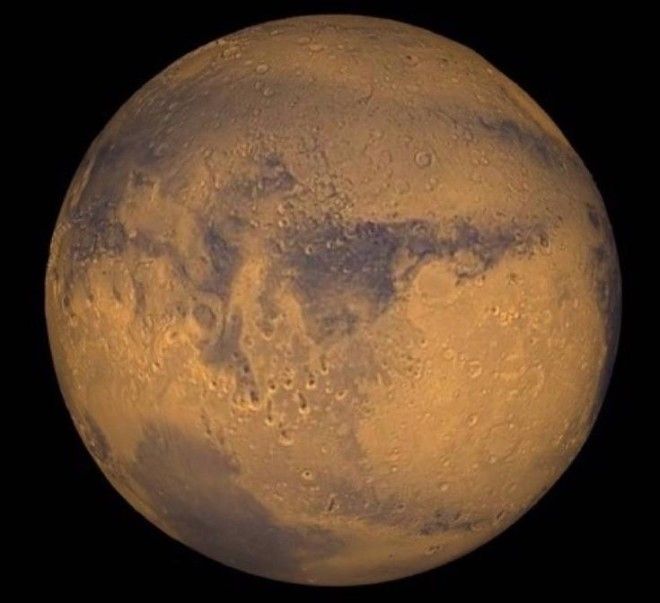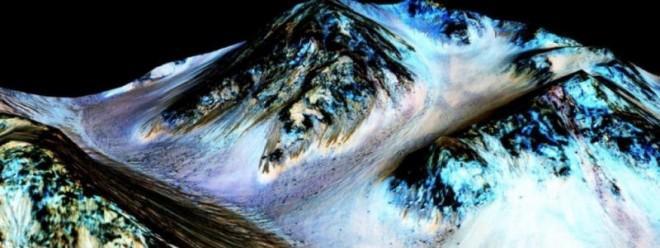More specifically, all weekend long, the agency teased that a major Mars mystery was solved.
Last morning's press conference, broadcast live from NASA headquarters in Washington, D.C., on NASA Television and on the agency's website, did not disappoint.
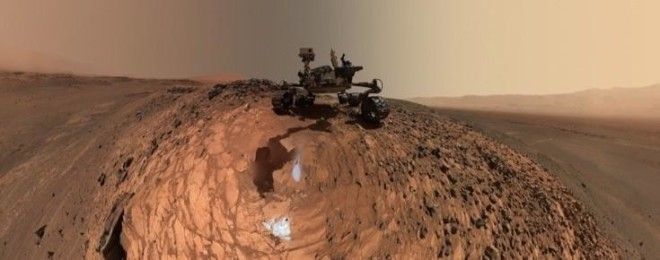
A self-portrait of the Curiosity Mars rover. Photo by NASA/JPL-Caltech/MSSS.
At 11:30 a.m. Sept. 28, 2015, NASA announced that, for the first time, they have evidence of flowing water on Mars.
They're called Recurring Slope Lineae, or RSL. They appear as dark streaks that begin in late spring, grow in the summer, and disappear by fall. Until now, NASA researchers couldn't explain what the streaks were.
Turns out, the streaks are evidence of salty water intermittently moving across the surface of the planet.
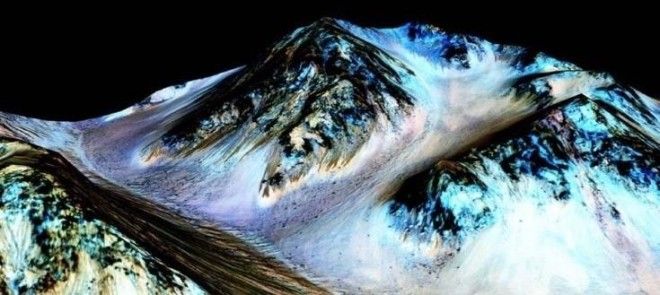
These dark, narrow streaks were formed by flowing water on Mars. Photo by NASA/JPL/University of Arizona.
But this isn't the first time water's been found on Mars.
(Wait, what?) Yep. Researchers discovered water frozen in small, salty puddles on the planet's surface at night and permafrost at Mars' poles.

Permafrost on the surface of Mars. Exciting. Photo by NASA/JPL-Caltech/University of Arizona.
But this latest announcement and discovery marks the first time that flowing water has been found on the incredibly cold, harsh planet.
Evidence of moving water could be a huge step forward in the search for life, and it opens up possibilities when it comes to the red planet's ability to sustain human life.
So ... are we sending humans to Mars? Not just yet.
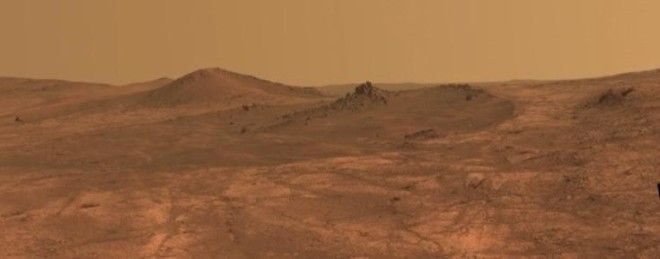
Even with the discovery of moving water, inhabiting the red planet — or even sending humans for a visit — is still a long way off. (Sorry, Matt Damon).
So for now, NASA and other international space agencies are conducting dry runs here on Earth.
Last October, six strangers (three men and three women) were picked to live in a dome on a Hawaiian volcano for eight months to simulate a stay on Mars. NASA backed the study to see if people isolated from civilization can work together and get along. It was essentially "Real World: Red Planet."
Even with successful simulations, NASA estimates the first human-manned mission to Mars won't happen until the 2030s.
That may seem like a long time to wait, especially after today's announcement. But as Dr. Jim Green, director of planetary science at NASA, told the crowd at today's announcement, it's all about safety.
"NASA's approach to exploration is not 'Star Trek.' It's not 'go where no man has gone before,'" he said. "It's really a very methodical approach for which we learn everything about the environment that we're going to subject humans to that we possibly can. ... And I anticipate continuing to do that for many years before humans even get in the vicinity of Mars."
But! This is a major breakthrough, and it lays the groundwork for many missions to come.
While you can't drink the water on Mars (it's much too salty) and you can't grow crops with it (the atmosphere on Mars is too thin), finding moving water on Mars is truly unprecedented and opens a lot of doors for exciting missions and exploration to come.
As astronaut John Grunsfeld said at this morning's announcement, "We are on a journey to Mars, and science is leading the way."
